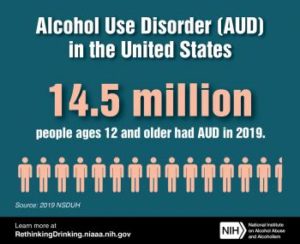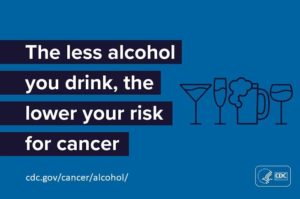Alcohol is the drug of choice among youth. Many young people are experiencing the consequences of drinking too much, at too early an age. As a result, underage drinking is a leading public health problem in this country.
Each year, approximately 5,000 young people under the age of 21 die as a result of underage drinking; this includes about 1,900 deaths from motor vehicle crashes, 1,600 as a result of homicides, 300 from suicide, as well as hundreds from other injuries such as falls, burns, and drownings.
Yet drinking continues to be widespread among adolescents, as shown by nationwide surveys as well as studies in smaller populations. As children move from adolescence to young adulthood, they encounter dramatic physical, emotional, and lifestyle changes. Developmental transitions, such as puberty and increasing independence, have been associated with alcohol use. So in a sense, just being an adolescent may be a key risk factor not only for starting to drink but also for drinking dangerously.
How people view alcohol and its effects also influences their drinking behavior, including whether they begin to drink and how much. An adolescent who expects drinking to be a pleasurable experience is more likely to drink than one who does not. An important area of alcohol research is focusing on how expectancy influences drinking patterns from childhood through adolescence and into young adulthood.
Beliefs about alcohol are established very early in life, even before the child begins elementary school. Know before age 9, children generally view alcohol negatively and see drinking as bad, with adverse effects. By about age 13, however, their expectancies shift, becoming more positive. As would be expected, adolescents who drink the most also place the greatest emphasis on the positive and arousing effects of alcohol.
Whatever it is that leads adolescents to begin drinking, once they start they face a number of potential health risks. Although the severe health problems associated with harmful alcohol use are not as common in adolescents as they are in adults, studies show that young people who drink heavily may put themselves at risk for a range of potential health problems.
What has been done to prevent this problem in out communities throughout America:
Raising the Price of Alcohol—A substantial body of research has shown that higher prices or taxes on alcoholic beverages are associated with lower levels of alcohol consumption and alcohol-related problems, especially in young people
Increasing the Minimum Legal Drinking Age—Today all States have set the minimum legal drinking at age 21. Increasing the age at which people can legally purchase and drink alcohol has been the most successful intervention to date in reducing drinking and alcohol-related crashes among people under age 21.
Enacting Zero-Tolerance Laws—All States have zero-tolerance laws that make it illegal for people under age 21 to drive after any drinking. When the first eight States to adopt zero-tolerance laws were compared with nearby States without such laws, the zero-tolerance States showed a 21-percent greater decline in the proportion of single-vehicle night-time fatal crashes involving drivers under 21.
School-Based Prevention Programs—The first school-based prevention programs were primarily informational and often used scare tactics; it was assumed that if youth understood the dangers of alcohol use, they would choose not to drink. These programs were ineffective. Today, better programs are available and often have a number of elements in common: They follow social influence models and include setting norms, addressing social pressures to drink, and teaching resistance skills. These programs also offer interactive and developmentally appropriate information, include peer-led components, and provide teacher training.
Family-Based Prevention Programs—Parents’ ability to influence whether their children drink is well documented and is consistent across racial/ethnic groups. Setting clear rules against drinking, consistently enforcing those rules, and monitoring the child’s behavior all help to reduce the likelihood of underage drinking. The Iowa Strengthening Families Program (ISFP), delivered when students were in grade 6, is a program that has shown long-lasting preventive effects on alcohol use.


